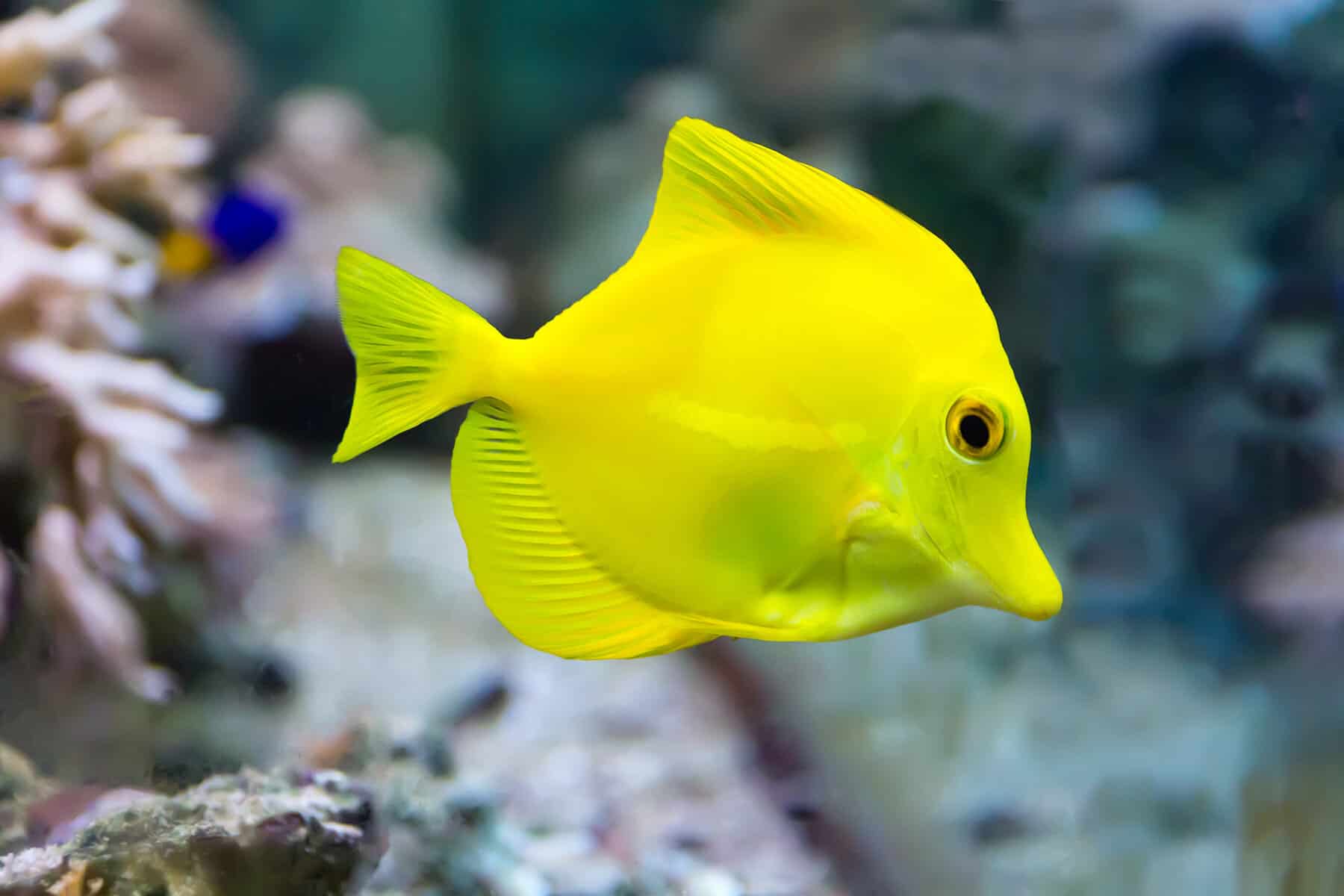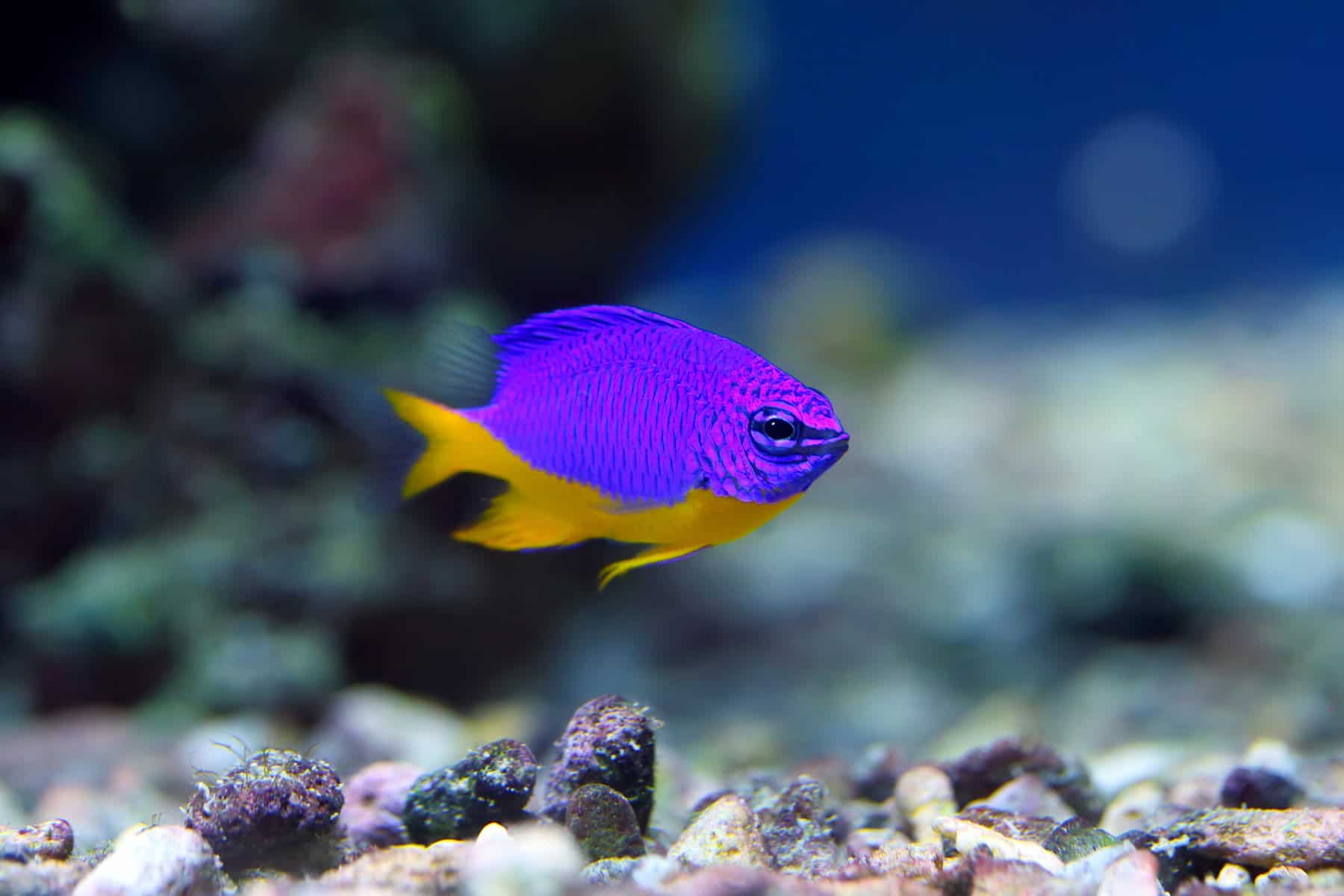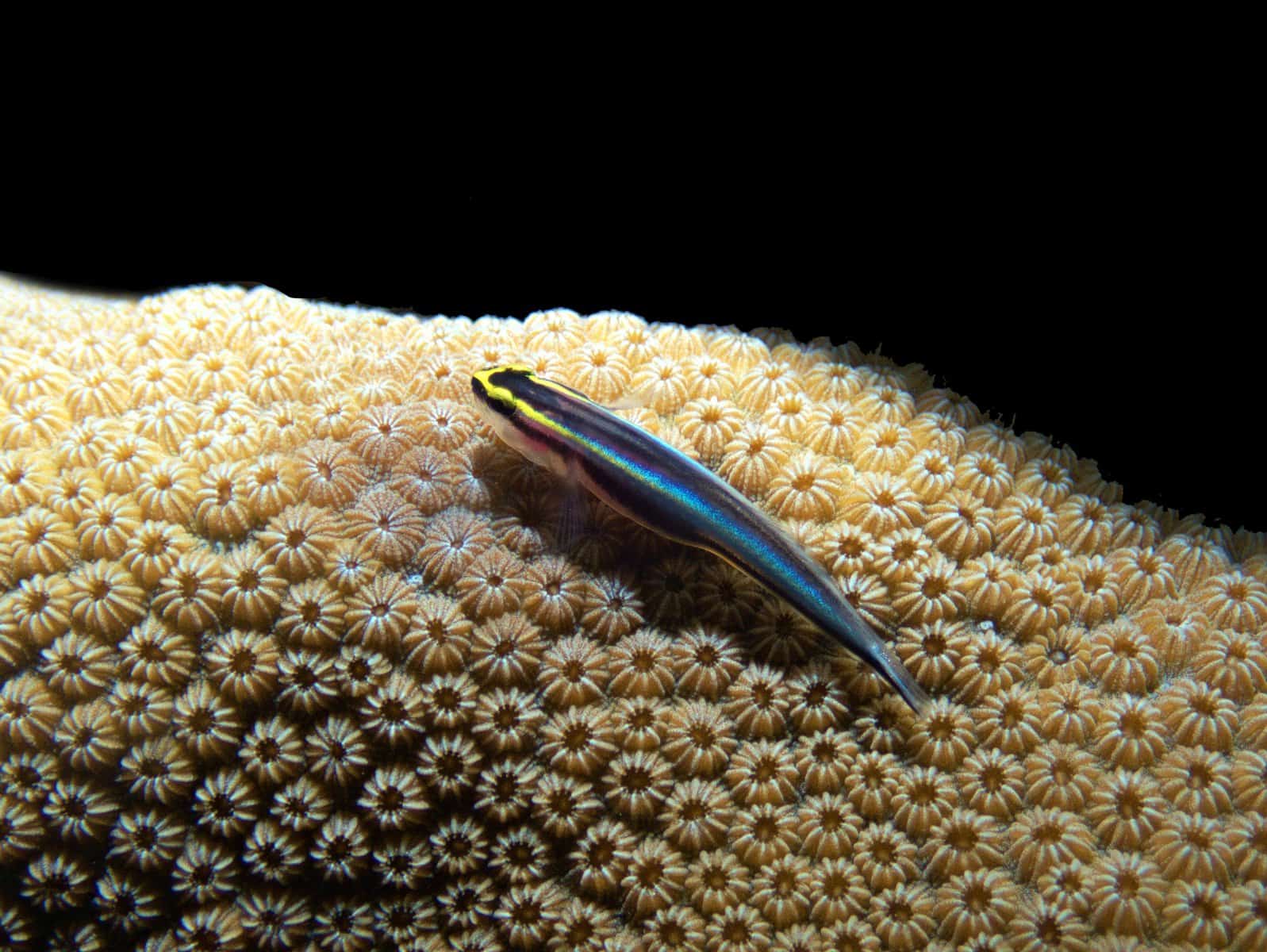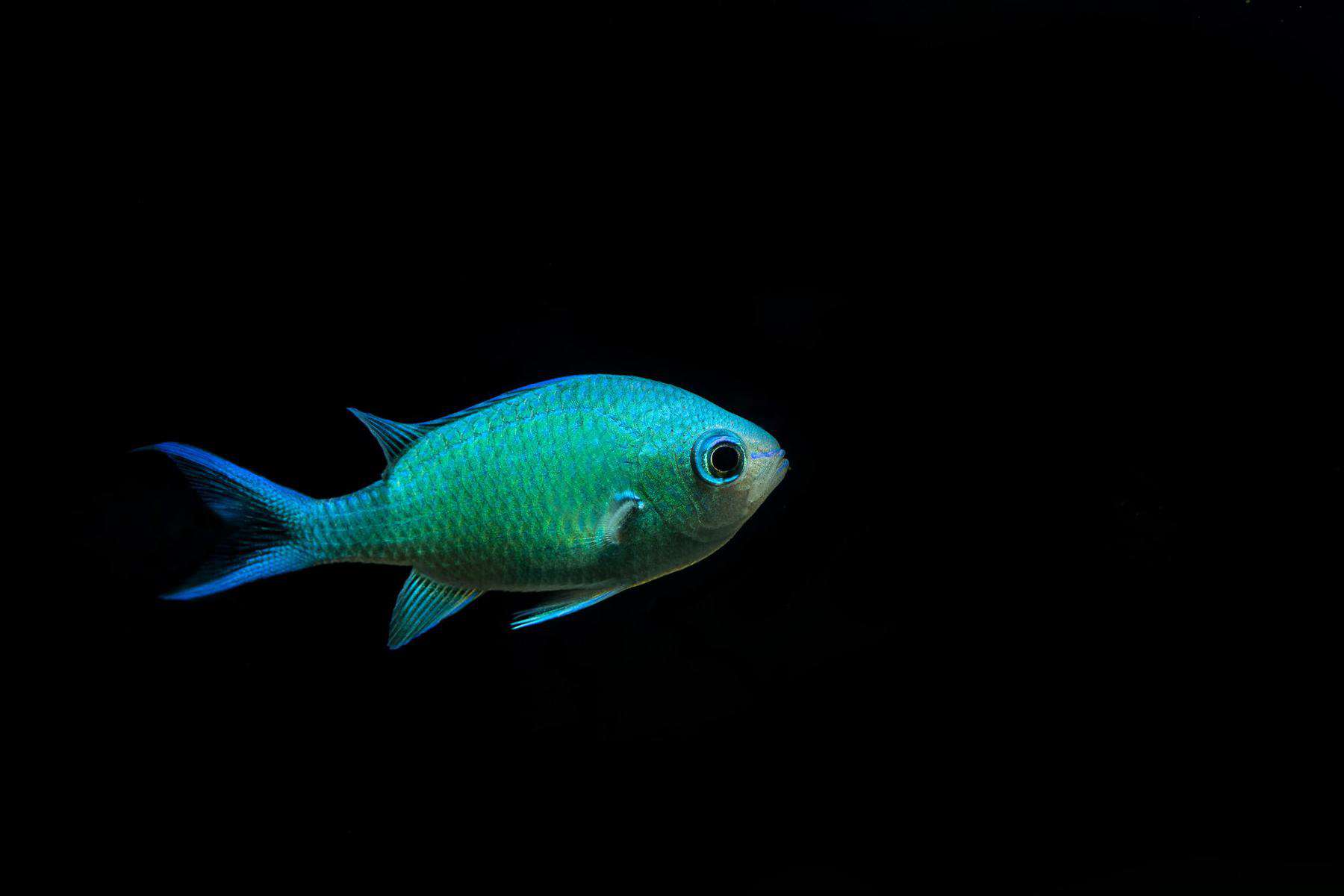[ad_1]
If you’ve ever watched Finding Nemo, you probably imagine clownfish as very sociable, affectionate creatures. How Marlin pined for Nemo when he thought he’d lost him!
But what about in real life? Well, it turns out that clownfish aren’t so fond of clowning around with each other in many cases.
While they can be kept in pairs, clownfish are fairly aggressive towards each other and some aquarists have claimed it’s easier to keep them with other species of fish instead.
Let’s take a closer look to tease out the truth of this intricate issue.
Clownfish Temperament
Before we begin, it’s important to understand some things about clownfish temperament.
Although clownfish may look like the cutest fish you’ve ever seen, appearances can be deceptive! Clownfish, especially females, can be highly aggressive fish that will attack anything that comes into their territory.
If you’ve got a 120-gallon tank, ‘their territory’ could easily mean about half of the tank. And what they’ll attack includes other fish species, your hands if you put them in the water, and especially other clownfish that are not mated with them!
Clownfish Change Gender
The next thing to understand about clownfish is that they are one of a very small number of fish that can change gender.
Clownfish are what is technically known as ‘sequential hermaphrodites,’ meaning they can change from being male to female, but never back from female to male.
All clownfish begin their lives as males. When living in a group, only the strongest fish in the hierarchy will turn into a female, whereas the others will remain as males until an opportunity comes for them to reach the top spot of the group and be the next to turn into a dominant female.
How To Get a Male-Female Pair of Clownfish
If you want to keep a pair of clownfish, it’s highly recommended to introduce two immature (male) fish at the same time, so that one of them will turn into a female and the two will hopefully choose to become a mated pair.
They might even breed for you if you’re lucky!
This is vital information for a potential clownfish keeper because if you want to keep more than one clownfish, you’ll want to keep a mated pair. Clownfish that are not mated are not generally welcomed into an existing territory and will be swiftly chased away.
Keeping Clownfish in Pairs
Keeping clownfish in pairs can be fun because you’ll get to witness their natural social behavior. If you buy an immature pair, you’ll get to watch them jostle for the top spot, to see who will become the female!
Pretty fascinating, right?
As one of them grows larger and establishes their position as the dominant fish, he will turn into a she, and the pair’s relationship will transform from something competitive and boyish to something hopefully more ‘romantic’ (it’s hard not to overlay a human narrative onto a fish with so much personality!).
If your fish fail to make a mated pair, or you add a male later on, you might have some problems though.
Since the female will be significantly bigger and stronger than any male, she can easily dominate them. If she chooses not to mate with them, she may instead choose to attack them and make their lives in the tank quite miserable!
Keeping Clownfish in Groups of 3 or More
While some aquarium hobbyists have successfully kept three or more clownfish in a single aquarium, I definitely wouldn’t recommend it for beginners.
Your mated pair will likely defend their territory fiercely, with high chances of aggression towards other clownfish in the tank. If you tried keeping two mated pairs in the same tank, they might well fight to the death.
But it does depend on individual personalities, as well as the different species of clownfish.
Saddlebacks (A. polymnus), Common (A. ocellaris), Percula (A. percula), Clark’s (A. clarkii), Pink skunk (A. perideraion), and Black-footed (A. nigripes) clownfish have all been observed living in groups in the ocean, so it’s conceivable that peaceful individuals of these species might learn to tolerate each other outside of courtship in their tank.
Maroon clownfish (Premnas biaculeatus) and the tomato clownfish (Amphiprion frenatus) are renowned for being especially aggressive, so keeping more than a pair of these species is definitely not recommended!
Keeping Clownfish Alone
After reading about all the fuss of keeping clownfish together, maybe you’re thinking it’d be easier to keep them alone. Less stress for you and your fish, you reckon?
While some saltwater tank owners have reported that their single clownfish seem quite content and peaceful on its own, others have felt that a lone clown can seem lonely, less active, and less vibrant.
Clownfish would rarely be found alone in the wild, and if you kept one like this you’d miss out on their fascinating social and courtship behavior.
Besides, from a visual perspective, clownfish simply just look stunning when kept in pairs, don’t they?
But if you’re a beginner in saltwater fishkeeping, and don’t have a second tank to house a clownfish if something goes wrong, you could start off with a single fish. Maybe you’ll feel ready to keep a pair later on.
Keeping Clownfish With or Without Anemones
Clownfish are sometimes known as ‘anemone fish’ because, in the wild, they form symbiotic relationships with certain venomous sea anemones which become their primary habitat.
A special mucus on the slime coat of the clownfish is thought to be responsible for providing the fish with immunity to what would normally be fatal stings from the anemone!
But do clownfish need anemones to live happy and healthy lives in an aquarium?
Although it’s a lovely idea, most people keep clownfish pairs without anemones in aquariums simply because anemones are so hard to keep alive!
Research has shown that only 1 in 18 sea anemones survive their first three years in captivity, which is hardly a very hopeful success rate!
And even if you did manage to keep an anemone alive in a clownfish tank, they’d tend to move around the fish tank a lot, destroying whatever they climbed across, and possibly ending up getting sucked into the filter’s powerhead!
It’s understandable then, why keeping anemones is recommended for experts only!
Tank Size
For a pair of Common Ocellaris clownfish, a minimum tank size of 30 gallons is recommended. While people have kept clownfish in 20-gallon tanks, it’s rather too small for adults.
But if you want to keep other fish species in the same tank as your clownfish, you’ll need a bigger tank than that!
Good Tank Mates for Clownfish
Whether you’re keeping your clownfish alone or in a pair, there are many other reef tank fish that you can keep with them.
The best tank mates for clownfish are fish species that are non-aggressive, hardy, and smaller than the clownfish (or at least very peaceful if they are bigger!).
Let’s take a look at some of the best:
Mandarin Dragonet
- Scientific Name: Synchiropus splendidus
- Adult Size: 3 to 4 inches
- Care Level: Intermediate
Mandarin Dragonets, or simply Mandarinfish, are great tank mates for clownfish in several ways. They are a truly peace-loving fish that will rarely quarrel with tank mates. They’re also around the same size as clownfish and enjoy similar water parameters.
Because they inhabit different areas of the aquarium, they will rarely come into contact, with clownfish, meaning troublesome encounters are very rare.
Yellow Tang

- Scientific Name: Zebrasoma flavescens
- Adult Size: 6 to 8 inches
- Care Level: Easy to Intermediate
The Yellow tang is a classic reef fish with an iconic appearance. While they can be aggressive toward other yellow tangs, they are so different from clownfish that the two species will normally ignore one another.
But since they can grow up to 8 inches, you’ll need a larger aquarium to host both of these gorgeous species. By the way, you can find out more about tang fish here.
Damselfish

- Scientific Name: Pomacentridae
- Adult Size: Up to 6 inches
- Care Level: Intermediate
Damselfish are another popular pet fish for reef setups and have a very beautiful, graceful appearance.
Although damselfish will sometimes bicker with one another, they will leave clownfish alone as long as the tank is big enough.
Neon Goby

- Scientific Name: Elacatinus oceanops
- Adult Size: Around 2 inches
- Care Level: Easy
Neon gobies are tiny, 2-inch-long fish that are quite docile and will never pose a threat to your clownfish.
These bright blue and black-striped fish are also very hardy and make a great choice for beginners.
Blue-Green Chromis

- Scientific Name: Chromis viridis
- Adult Size: 3 inches
- Care Level: Easy
Blue-Green chromis are a member of the damselfish family but are smaller, more peace-loving, and exceptionally easy to keep.
Their beautiful, iridescent blue-green flanks make this fish a very soothing color and they contrast nicely with the clownfish’s classic orange-white patterning.
Other Saltwater Fish Species That Are Compatible With Clownfish
We’re only just scratching the surface of some of the fish you could keep alongside clownfish on this page.
You can find out about more exciting fish to add to your saltwater on our dedicated page here!
Clownfish Lifespan
In the wild, clownfish tend to live between 6 and 10 years. In aquariums, their lifespan is often shorter due to incorrect care and negligence.
Thankfully, some fish keepers have managed to reverse this trend by keeping their clownfish alive for a staggering 20 years! Clean water and a diverse diet can go a long way in helping these fish live longer.
Captive-raised clownfish tend to have a longer lifespan than live-caught specimens, as they’ve grown up to be adapted to a confined environment.
But, sadly, this isn’t the case for ‘designer’ clownfish, which have often been bred for the sake of special patterns and bright colors at the expense of a robust constitution.
Conclusion
Clownfish can be kept alone, but many people feel they’re happier, and more interesting when kept in pairs.
Groups of clownfish are not recommended for anyone except expert reef specialists, since their territorial nature could threaten the lives of the weaker members of the group.
If you do decide to keep a pair of clownfish, it’s a good idea to have a second tank as a backup, in case something goes wrong.
To learn more about these cutest of fish, check out our fascinating guide to different species of clownfish here.
[ad_2]
Source link
